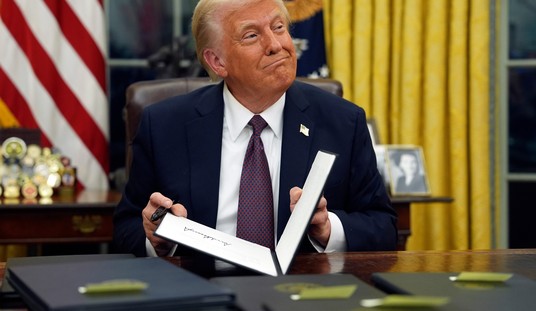Americans are fed up with soaring electric bills. We should be skeptical of fearmongering from mainstream media claiming the Big Beautiful Bill will spike prices by cutting wind and solar subsidies—I’m not buying it and neither should you.
This bill advances President Trump’s energy vision of abundant, reliable, affordable energy. It will not drive-up costs; rather, it’s designed to stabilize the grid and curb wasteful spending. It prioritizes reliable, affordable energy over subsidized, part-time, intermittent wind and solar.
Electricity prices are already climbing, and not because of this bill. Rising prices have been caused by decades of misguided policies propping up unreliable wind and solar while choking coal, gas, and nuclear and driving up their costs to operate because of unnecessary over regulations, which is driven by costly climate ideology.
The Times acknowledges surging prices, which are up 17% nationally from 2020 to February 2025 (per EIA data). The greater wind and solar adoption, the greater the increase. Why?
Wind and solar are intermittent, producing power only when the wind blows or the sun shines. They need costly backup; think extra transmission lines, expensive batteries, gas plants idling for when renewables fail. Add in slave-labor-made panels from China and $1.2 trillion in inflation-causing green subsidies from the Inflation Reduction Act (IRA), and it’s clear: wind and solar aren’t the bargain they’re sold as.
Recommended
The Big Beautiful Bill cuts roughly $500 billion in unspent IRA subsidies, which is a move I applaud. In Ohio, Obama and Biden-era subsidies have turned cornfields into solar sprawl, pitting neighbors against each other and raising concerns about soil, food security, and property values.
Critics claim cutting subsidies will raise costs by boosting natural gas demand and electricity prices. That’s nonsense. Ending unspent IRA funds slows wind and solar sprawl, easing grid strain and costs, while Trump’s deregulation of coal, gas, and nuclear, as pledged, will cut red tape, lowering expenses passed to consumers.
One of the major reasons that heavily subsidized wind and solar drive-up costs and offer no savings whatsoever is because of the way our electric grids are managed. They require electric makers to bid on supplying electricity, where wind and solar bid the lowest because they are subsidized and have no fuel costs. They are prioritized because they have the lowest bid prices, and their electricity is usually purchased first.
All the electricity is purchased at the highest price, yet no other industry would pay the lowest bidder the highest price. Instead, they should pay the bid price, and not the highest price. Unfortunately, this bill didn’t take care of the recipe that has led to ever higher energy prices.
Adding more wind and solar raises electricity costs because we must pay for reliable, on demand electricity from natural gas, coal, and nuclear and keep those plants running if we want reliable all-the-time electricity—where we then pay extra for the added wind and solar power.
Since wind and solar power displace electricity from the on-demand generators, they charge higher prices because they produce less electricity—leading to higher bid prices—where they then receive these windfall profits.
After 30 years of wind and solar subsidies and tax credits, they are mature industries that should be able to stand on their own economic two feet, and if they were cheaper as we are told they are, they should have no issues doing so.
The North American Electric Reliability Corporation (NERC’s) 2025 warnings of blackout risks in PJM, New England and several other regions is due to overreliance on renewables prove we need reliable power, and only on demand generators like natural gas, coal, and nuclear power can provide this.
These warnings are echoed by the Federal Energy Regulatory Commission’s (FERC) Chairman, Mark Christie. He warned that if we do not change course, there will be a “next time for blackouts.” He tells us that we need to have plenty of on demand electricity generation—more than peak demand—or we will have blackouts and shortages, and many regions are in danger of seeing these blackouts.
The bill phases out wind and solar subsidies and tax credits post-2027, letting markets, not bureaucrats, decide—which is a very good thing.
The Big Beautiful Bill isn’t perfect, but it’s a bold step toward affordable, reliable energy. Let’s prioritize coal, gas, and nuclear for stability and invest in advanced nuclear and geothermal energy, ensuring power when we need it. All without breaking the bank.
The Big Beautiful Bill adds momentum to American energy freedom.


